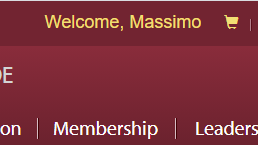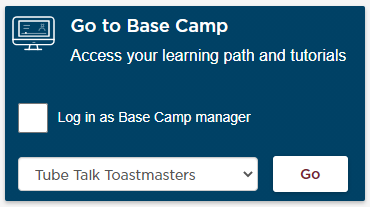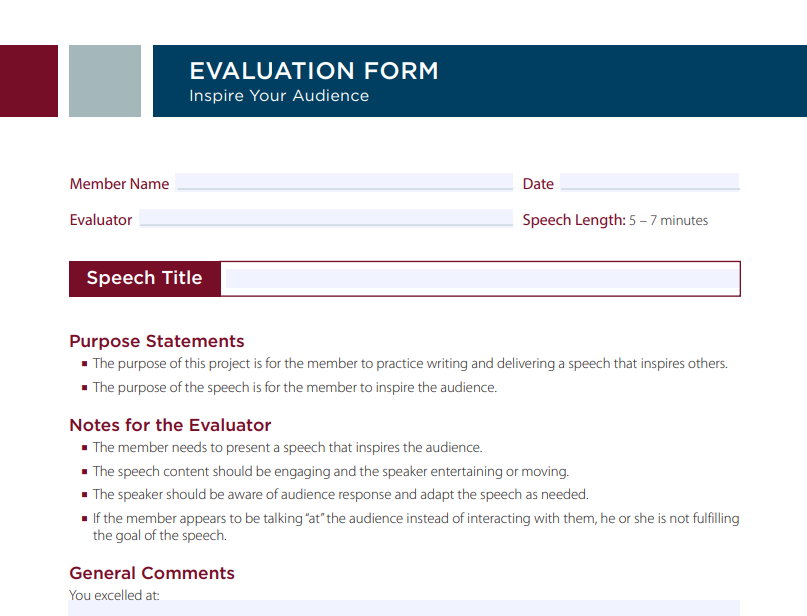Ever found yourself evaluating your evaluation right after you’ve given it?
If you are anything like me, you might have found yourself wondering how you could have done a better job of it. I’ve caught myself many times evaluating my evaluation on the same evening of giving it. Over and over again, countless times. But my evaluations didn’t get much better as a result.
At some point I realised I had to stop that circular process and start to evaluate my evaluations ahead of evaluation nights, but I wasn’t sure on how to go about making this change.
I thought: wouldn’t it be better to evaluate how my evaluations are going, ahead of delivering them, instead of just after? And by the way, isn’t this a good time to think on the subject of sharpening up on our evaluations? We are after all heading for Evaluation contests time in early 2021. And hey, evaluations are at the heart of our Public Speaking programme pretty much all year round!
I am happy to tell you that at some point I managed to interrupt that circular thinking/behaviour and find a way to a sharper focus on my evaluations. Recently I had the privilege of evaluating a prepared speech at another Toastmasters Club and it went particularly well: I was voted Best Evaluator for the night. Not to let it go to my head, but maybe I’m onto something.
I thought you might like to hear what I found.
And here is the ‘secret’…wait for it….
Advance preparation!
But in a specific way.
Oh yes, we can do quite a bit of advance preparation ahead of doing a speech evaluation. But I am not talking about getting the speaker’s name, speech title, educational project, specific points of interest to the speaker and so on.
All of the above are important and we should indeed endeavour to obtain those details well ahead of the evaluation date. But I am referring to something easier to pin down; something that is already there for us to access and use; something that sometimes doesn’t make a showing at all in the evaluation process – not before, during or even after it is delivered. What is it?
I am referring to the Pathways Evaluation Resource.
All Evaluation Resources are available on the Toastmasters International website when you log into your account and click on your account name, at the top. You don’t even need to go into specific pathways to get to them. Yippee!
Unless you are thorough enough to go through the whole project as if you were giving the speech yourself (‘time is of the essence’, comes to mind) the Evaluation Resource is your…well, your go-to resource. Cut to the chase by dropping it onto your mobile, tablet or computer and then:
Home in on the summary at the top of it.
Let me use my recent successful evaluation as an example here, to illustrate what I mean.
Please follow the below snapshots and notes beneath them:

1. Get speech details
Go to the EasySpeak agenda and get the speaker’s details, including Pathways project, so you can download the right evaluation resource.

2. Log in to Toastmasters International
Use your membership credentials to log onto Toastmasters International website. Then click on your ‘Welcome, name’ – at the top.

3. Click on the Go button
Click Go, to move to Basecamp. Make sure to select the right Club if you are a dual member.

4. Click 'Speech Evaluations'
This will take you to all Speech evaluation resources, for ALL paths, all projects.

5. Download the right Evaluation Resource
Follow your device’s prompts to download or view in a browser. This is the evaluation resource I used recently, as an example. Focus on the Purpose Statements and Notes for the Evaluator. This is the all-important part, in my opinion.

6. This is the IMPORTANT PART!
Home in to the top part of your evaluation resource. It has the objective of this project, as well as what is expected of the speaker in order to NAIL it!
I found using a highlighter helpful. This is in a nutshell, what you will be your evaluation’s backbone. If you are lucky, there will be 3 points to use.
As shown in the snapshot above, the purpose of this speech is to Inspire the Audience. Did I feel inspired by this speech? Oh yes, indeed!
I found 3 main points for the speaker to achieve the objective:
1. Content should be engaging.
2. The speaker should deliver this content in an entertaining or moving way.
3. The speaker should be aware of audience response and adapt her delivery accordingly.
Naturally, I found I could build on these 3 main points with supporting details as to what I thought the speaker did very well and what could be improved.
The Evaluation Resource gave me the structure I was looking for, the scaffolding to hang everything else on.
I hope you have found this reminisce useful and look forward to evaluating your speech next and having my speech evaluated by you!
Best wishes to you for Christmas and NY
Massimo
Vice President Education
Immediate Past President
Tube Talk Toastmasters Club 2020-21
Area Director District 91 Area B18 2020-21
Photo by Julien Backhaus on unsplash.com


Recent Comments